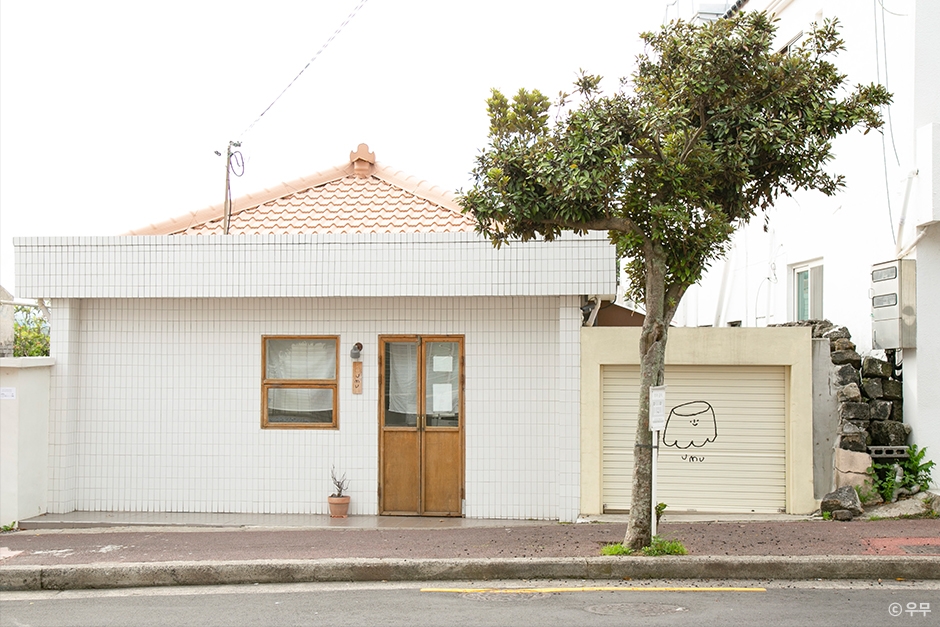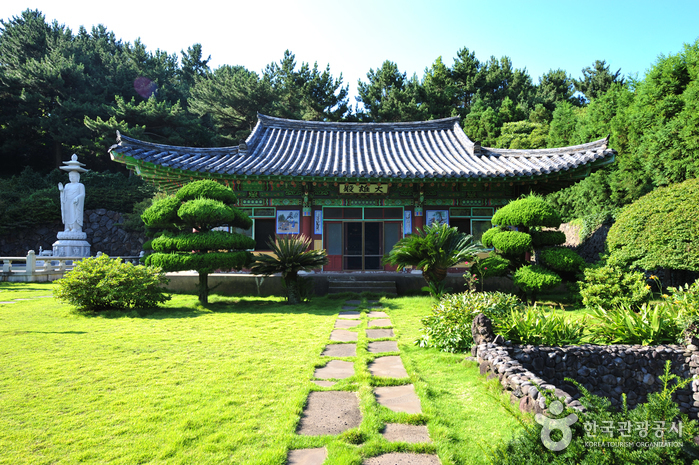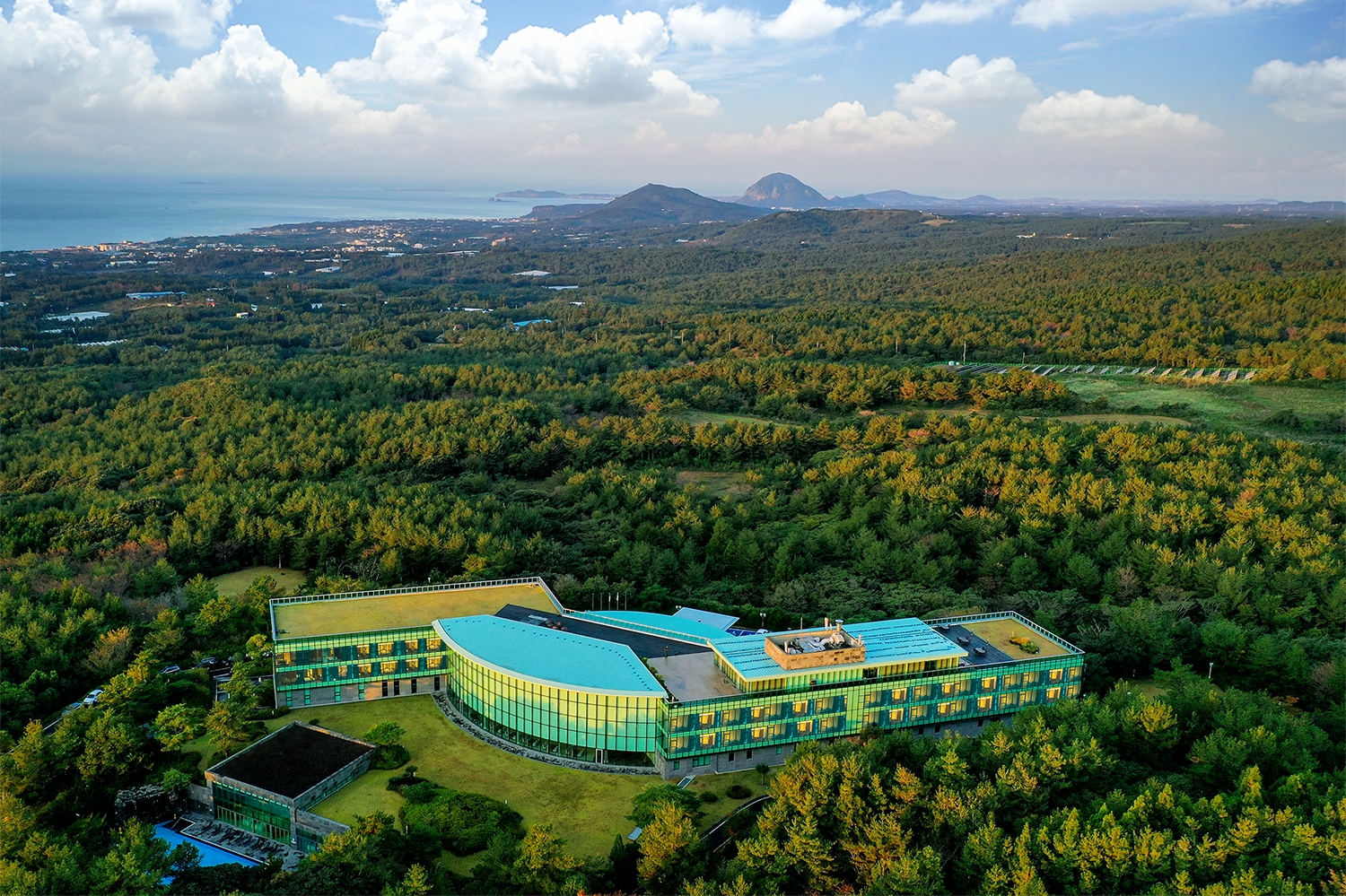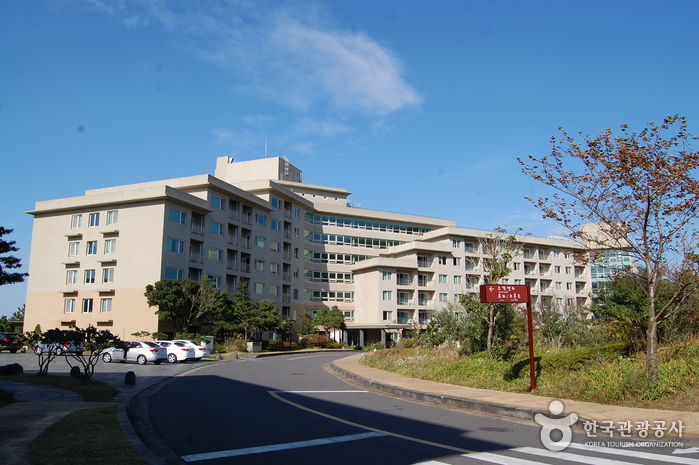Umu Hallim Branch (우무)
16.5Km 2024-11-07
542-1 Hallim-ro Hallim-eup, Jeju-si, Jeju-do
This dessert place is popular for a pudding made from a gar (a type of seaweed) sourced from hanyeos (women divers). You can only do a take-out here, and one team can visit inside the shop at a time.
Jeju Jeolmul Recreational Forest (제주절물자연휴양림)
17.0Km 2023-01-17
584, Myeongnim-ro, Jeju-si, Jeju-do
+82-64-728-1510
Jeju Jeolmul Recreational Forest opened on July 23, 1997. The forest is comprised of both a natural Japanese cedar forest and a man-made forest. The combination of the sea breeze and the shade of the forest canopy over the walking paths make it a cool attraction all year round.
The recreational forest features a promenade, waterfall, pond, grass square, wood-crafting studio, and more. There are forest cabins available for lodging.
Jeju Bultapsa Temple (불탑사(제주))
17.1Km 2021-06-15
41, Wondang-ro 16-gil, Jeju-si, Jeju-do
+82-64-755-9283
Located in Samyang-dong, Jeju-si, Bultapsa Temple is a branch of Gwaneumsa Temple, the headquarters of the 23rd district of the Jogye Order of Korean Buddhism. The temple is nestled at the foot of Wondangbong Peak (alt. 170.4 meters). The temple started out as the Buddhist shrine Wondangsa, one of three temples in Jeju during the Yuan dynasty. Most of the temple was damaged due to the Jeju Uprising on April 3, 1948 and it was rebuilt in 1953. Later, the temple underwent renovations and extension works to get to the current conditions. Today, the temple has Daeungjeon Hall, Yosachae monk quarters, Jonggak Bell Tower, and Cheonwangmun Gate. The temple's five-story stone pagoda is Jeju's only stone pagoda from the Goryeo dynasty. It was designated Treasure No. 1187 in November 1993.
Roe Deer Observation Center (제주 노루생태관찰원)
17.1Km 2020-12-03
520, Myeongnim-ro, Jeju-si, Jeju-do
+82-64-728-3611
Roe Deer Observation Center opened on August 3, 2007 to offers a place where visitors may observe and watch roe deer and other creatures in their natural habitat. Guests can watch the deer from the forest trails, or feed them at the experience enclosure. The exhibition hall offers information on Hallasan Mountain and the animals and plants that live around it, including a video room teaching about the life of a roe deer. The observation center grounds also include walking paths up Geochinoreum Volcanic Cone.
We Hospital (WE병원)
18.0Km 2025-07-29
453-95 1100-ro, Seogwipo-si, Jeju-do
As a premium health resort, THE WE is located halfway up Hallasan Mountain, a UNESCO-recognized World Natural Heritage. In this Korea's first health resort, you can enjoy comfortable 5-star hotel services and healthcare services of Halla Medical Foundation with natural volcanic bedrock water of Jeju and the clean forest of Halla Mountain.
WE Hospital of Halla Medical Foundation operates Korea's only health resort to maximize health management effects utilizing natural environments and various health programs. It provides various one-stop programs of its Health Promotion Center, Plastic Surgery Centers, Wellness Center and Medical Spa Center with the concept of "Medi-Well" that combines "Medical" and "Wellness."
Experience customized healthcare services differentiated from other hospitals at THE WE, a premium health resort.
We Hotel (위(WE) 호텔)
18.0Km 2024-12-12
453-95 1100-ro, Seogwipo-si, Jeju-do
+82-64-730-1200
We Hotel in Jeju is the first premium health resort in Korea that combines a resort with medical services offered by the We Hospital of Halla Medical Foundation. In addition to comfortable hotel services, it also offers differentiated healthcare services, along with wellness and health-promoting programs, whose effectiveness was scientifically proven by medical experts. The hotel offers ultimate healing moments through various wellness programs, medical spa, and mediwell programs, utilizing the clean forests in Hallasan Mountain and pure volcanic bedrock water -- all nature's gifts.
Hanwha Resort Jeju (한화리조트 제주)
18.1Km 2025-03-16
575-107, Myeongnim-ro, Jeju-si, Jeju-do
+82-64-725-9000
Hanwha Hotel & Resort is a leading hospitality leisure company with the highest number of condominiums and golf courses across Korea. Hanwha Resort in Jeju offers a wide range of subsidiary facilities and is located nearby many local attractions.
Olive Young - Jeju Hyeopjae Branch [Tax Refund Shop] (올리브영 제주협재점)
18.3Km 2024-06-27
336, Hallim-ro, Hallim-eup, Jeju-si, Jeju-do
-
CU - Jeju Hyeopjae Jecheon Branch [Tax Refund Shop] (cu제주협재제천점)
18.4Km 2024-06-27
329-8, Hallim-ro, Hallim-eup, Jeju-si, Jeju-do
-
Hyeopjae Beach (협재해수욕장)
18.4Km 2025-03-31
329-10 Hallim-ro, Hallim-eup, Jeju-si, Jeju-do
Hyeopjae Beach, encircled by lush pine forests, seamlessly extends into Geumneung Beach. The beach features smooth white sand, shallow waters, and a gentle slope ideal for swimming. Camping is available at Songlim, along with various amenities. The view of the emerald-colored sea and the distant Biyangdo Island offers magnificent scenery, with the sunsets being particularly breathtaking.






 English
English
 한국어
한국어 日本語
日本語 中文(简体)
中文(简体) Deutsch
Deutsch Français
Français Español
Español Русский
Русский